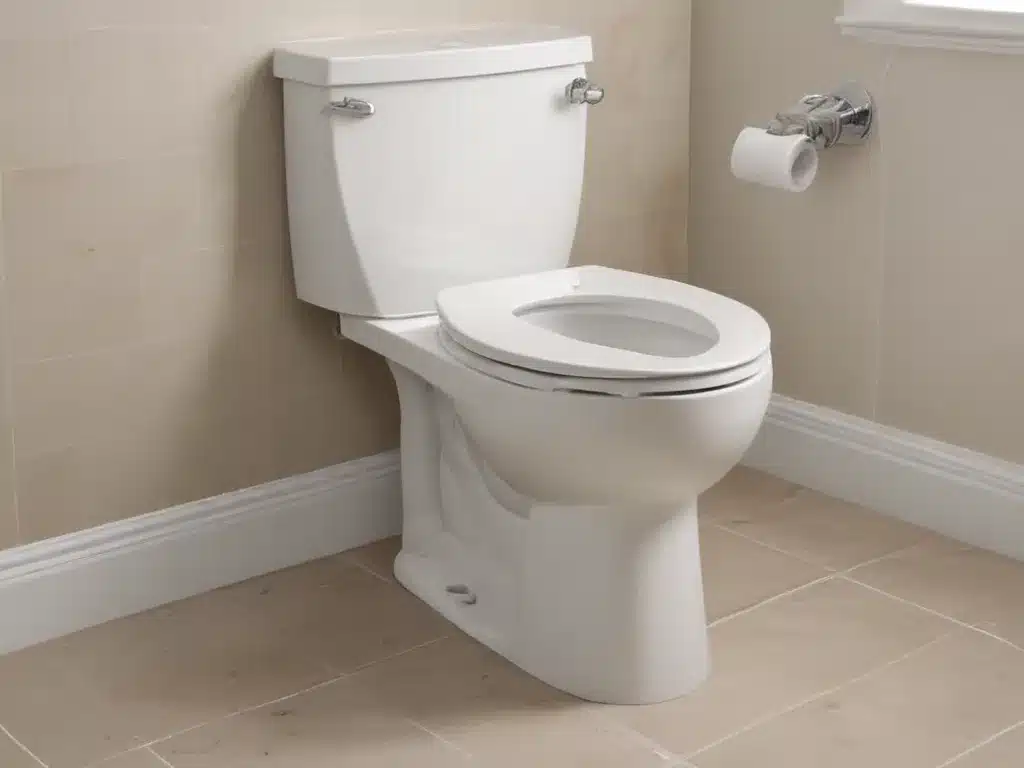The Hassle of Manual Toilet Cleaning
I know the struggle of keeping my toilet clean all too well. The endless scrubbing, the harsh chemicals, and the constant battle against stubborn stains – it’s enough to make anyone dread this chore. But what if I told you that there’s a better way? A way to never have to scrub a toilet again?
That’s where self-cleaning toilet technology comes in. This innovative solution promises to revolutionize the way we approach bathroom maintenance. With the touch of a button, you can say goodbye to the tedious task of manual toilet cleaning and hello to a spotless, hygienic bathroom with minimal effort.
The Evolution of Toilet Cleaning
In the past, the only options for keeping our toilets clean were manual scrubbing, harsh chemical cleaners, or calling in a professional cleaning service. These methods not only required significant time and effort, but they also posed potential health risks and environmental concerns.
But the world of toilet cleaning has undergone a remarkable transformation. Self-cleaning toilet technology has emerged as a game-changer, offering a more efficient, eco-friendly, and convenient solution.
Understanding Self-Cleaning Toilets
So, what exactly are self-cleaning toilets, and how do they work? These advanced fixtures utilize a combination of smart features and innovative technologies to automate the cleaning process.
The Power of Electrolyzed Water
One of the key components of self-cleaning toilets is the use of electrolyzed water. This technology harnesses the power of electricity to transform regular water into a powerful, yet gentle, cleaning solution. The electrolysis process breaks down the water molecules, creating a highly effective disinfectant that can eliminate germs, bacteria, and stubborn stains without the need for harsh chemicals.
Automatic Flushing and Cleaning Cycles
Self-cleaning toilets are designed to flush and clean themselves on a scheduled cycle, ensuring that your toilet is always fresh and hygienic. These cycles can be customized to your preferences, allowing you to choose the frequency and intensity of the cleaning process.
Antimicrobial Surfaces
In addition to the self-cleaning capabilities, many self-cleaning toilets feature antimicrobial surfaces. These specialized coatings prevent the growth of bacteria, mold, and other microorganisms, further enhancing the cleanliness and hygiene of your bathroom.
The Benefits of Self-Cleaning Toilets
Now that we understand the technology behind self-cleaning toilets, let’s explore the incredible benefits they offer:
1. Time and Effort Saved
With a self-cleaning toilet, you can bid farewell to the tedious task of manual scrubbing. The automated cleaning cycles take care of the hard work, freeing up your time and energy for more enjoyable activities.
2. Improved Hygiene
By eliminating the need for harsh chemicals and providing a constant state of cleanliness, self-cleaning toilets help maintain a healthier and more hygienic bathroom environment. This is especially beneficial for families with young children or individuals with compromised immune systems.
3. Cost-Effective
While the initial investment in a self-cleaning toilet may be higher than a traditional model, the long-term savings can be significant. By reducing the need for cleaning supplies and the potential for costly plumbing issues, self-cleaning toilets can pay for themselves over time.
4. Environmentally Friendly
The use of electrolyzed water and the elimination of chemical cleaners make self-cleaning toilets a more eco-friendly option. They reduce the impact on the environment and contribute to a more sustainable household.
Real-Life Case Studies
To better understand the real-world benefits of self-cleaning toilets, let’s explore a few case studies:
The Johnson Family
The Johnson family, a household of four, had always struggled with keeping their bathroom clean. The constant scrubbing and the strong chemical odors were a source of frustration. After installing a self-cleaning toilet, they noticed an immediate difference. “It’s been a game-changer for us,” said Mrs. Johnson. “We no longer have to spend hours cleaning the toilet, and the bathroom always feels fresh and inviting.”
The Smith Household
When Mr. Smith, a busy professional, moved into his new home, he prioritized finding a solution that would simplify his cleaning routine. “As someone who travels frequently, I needed a hassle-free way to maintain a clean bathroom,” he explained. “The self-cleaning toilet has been a godsend. I can focus on other household tasks without worrying about the toilet.”
Choosing the Right Self-Cleaning Toilet
With the variety of self-cleaning toilet options available, it’s essential to find the one that best suits your needs and preferences. Here are some factors to consider when selecting a self-cleaning toilet:
Cleaning Cycles and Customization
Look for models that offer customizable cleaning cycles, allowing you to adjust the frequency and intensity of the cleaning process to your liking.
Antimicrobial Surfaces
Prioritize toilets with antimicrobial surfaces to ensure long-lasting cleanliness and reduced maintenance.
Water Efficiency
Consider the water usage of the self-cleaning toilet to ensure it aligns with your environmental and budgetary goals.
Integrated Technology
Some self-cleaning toilets come with additional features, such as smart sensors, remote controls, and voice-activated commands, for an even more convenient experience.
Conclusion: A Cleaner, Easier Future
The advent of self-cleaning toilet technology has ushered in a new era of bathroom maintenance. By leveraging innovative solutions like electrolyzed water and automated cleaning cycles, you can now enjoy a spotless, hygienic toilet without the hassle of manual scrubbing.
If you’re ready to bid farewell to the tedious task of toilet cleaning and embrace a more convenient, eco-friendly, and cost-effective solution, consider exploring the remarkable world of self-cleaning toilets. Visit AdamCleaning.uk/services/ to learn more about how this revolutionary technology can transform your bathroom experience.







